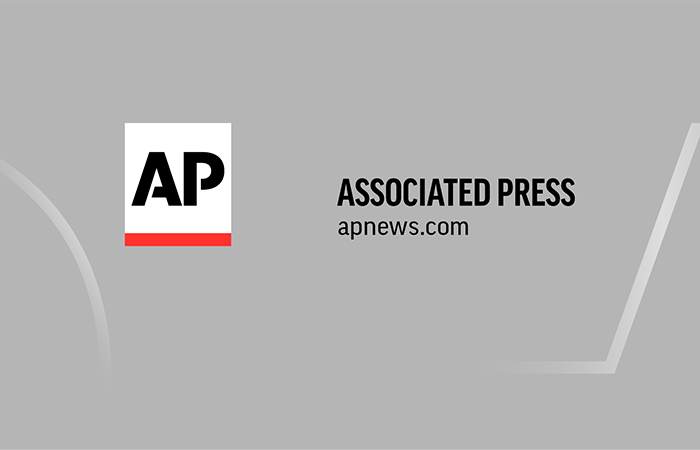NIH Grant Cuts: A Legal Battle for Biomedical Research
June 18, 2025, 5:56 am

Location: United States, Maryland, Chevy Chase
Employees: 1001-5000
Founded date: 1953
Total raised: $505K

Location: United States, District of Columbia, Washington
Employees: 201-500
Founded date: 1972
The courtroom echoed with the weight of a decision that could reshape the landscape of biomedical research in the United States. A federal judge ruled that cuts to certain National Institutes of Health (NIH) grants were illegal. This ruling comes amid a backdrop of political turmoil and contentious debates over research priorities. The judge's words were sharp and clear: he had never seen such discrimination in his 40 years on the bench.
The ruling is a small victory in a larger war. It addresses only a fraction of the hundreds of NIH projects that faced cuts under the Trump administration. The judge's decision stems from lawsuits filed by 16 attorneys general, public health advocates, and scientists whose work was jeopardized. The stakes are high. Lives hang in the balance.
The NIH has long been the backbone of biomedical research funding. It supports studies that range from cardiovascular health to mental illness. The cuts targeted research into politically sensitive subjects. The implications are profound. The judge's interim ruling mandates that funding be restored, but the battle is far from over. An appeal is expected, and the future of many projects remains uncertain.
The lawsuits did not explicitly claim racial discrimination. However, they highlighted how the new NIH policies stifled research into critical areas. The plaintiffs argued that the NIH's termination letters were boilerplate responses, lacking genuine concern for the affected studies. The research topics were diverse, covering everything from Alzheimer’s to alcohol abuse in minors. Each project had the potential to save lives or improve health outcomes.
One project aimed to understand how medications work differently in people of diverse backgrounds. Another focused on suicide treatment. These studies are not just academic exercises; they have real-world implications. Cutting funding means cutting off hope for many patients.
The federal government defended the NIH's actions, claiming that the terminations were justified. They argued that the NIH has broad discretion in deciding which grants to fund. The government pointed to examples of minority health grants that were either renewed or untouched. Yet, the judge's ruling suggests that the NIH's discretion may have crossed a line into discrimination.
The NIH's role as the world's largest public funder of biomedical research cannot be overstated. It has been a beacon of hope for scientists and patients alike. The current situation raises questions about the future of research funding. Will political agendas dictate what research gets funded? Or will science prevail?
The implications of this ruling extend beyond the courtroom. It sends a message to researchers and advocates. It signals that the fight for equitable funding is far from over. The NIH must navigate a complex landscape of political pressures and scientific integrity.
Meanwhile, the FDA is also making headlines. The agency announced plans to expedite drug reviews for companies that align with national priorities. This initiative overlaps with previous programs but introduces broader criteria for receiving fast-track vouchers. The goal is clear: bring more cures to the public.
However, this approach raises eyebrows. Critics worry that the FDA may lower its scientific standards. The agency has faced backlash for approving drugs based on preliminary data that later proved ineffective. The balance between speed and safety is delicate.
Health Secretary Robert F. Kennedy Jr. has emphasized a return to rigorous scientific standards, especially for vaccines. His administration's stance contrasts sharply with the push for faster drug approvals. This duality in approach highlights the ongoing tension between urgency and thoroughness in public health.
As the NIH and FDA navigate these turbulent waters, the implications for public health are profound. The decisions made today will shape the future of biomedical research and drug development. The stakes are high, and the outcomes uncertain.
In this landscape, advocacy is crucial. Scientists, patients, and the public must remain vigilant. They must hold agencies accountable and ensure that research funding is equitable and based on scientific merit. The fight for health equity is not just a legal battle; it is a moral imperative.
The NIH ruling is a reminder that the pursuit of knowledge is often fraught with challenges. It underscores the importance of protecting research from political interference. The future of health research depends on the ability to ask tough questions and seek answers without fear of reprisal.
As we look ahead, the intersection of science and politics will continue to be a battleground. The outcomes of these legal and regulatory challenges will resonate for years to come. The quest for knowledge, for cures, and for a healthier society is a journey worth taking.
In the end, the fight for biomedical research funding is not just about dollars and cents. It is about lives. It is about hope. It is about the future of health in America. The courtroom may have delivered a temporary victory, but the battle is ongoing. The call to action is clear: stand up for science, stand up for health, and stand up for the future.
The ruling is a small victory in a larger war. It addresses only a fraction of the hundreds of NIH projects that faced cuts under the Trump administration. The judge's decision stems from lawsuits filed by 16 attorneys general, public health advocates, and scientists whose work was jeopardized. The stakes are high. Lives hang in the balance.
The NIH has long been the backbone of biomedical research funding. It supports studies that range from cardiovascular health to mental illness. The cuts targeted research into politically sensitive subjects. The implications are profound. The judge's interim ruling mandates that funding be restored, but the battle is far from over. An appeal is expected, and the future of many projects remains uncertain.
The lawsuits did not explicitly claim racial discrimination. However, they highlighted how the new NIH policies stifled research into critical areas. The plaintiffs argued that the NIH's termination letters were boilerplate responses, lacking genuine concern for the affected studies. The research topics were diverse, covering everything from Alzheimer’s to alcohol abuse in minors. Each project had the potential to save lives or improve health outcomes.
One project aimed to understand how medications work differently in people of diverse backgrounds. Another focused on suicide treatment. These studies are not just academic exercises; they have real-world implications. Cutting funding means cutting off hope for many patients.
The federal government defended the NIH's actions, claiming that the terminations were justified. They argued that the NIH has broad discretion in deciding which grants to fund. The government pointed to examples of minority health grants that were either renewed or untouched. Yet, the judge's ruling suggests that the NIH's discretion may have crossed a line into discrimination.
The NIH's role as the world's largest public funder of biomedical research cannot be overstated. It has been a beacon of hope for scientists and patients alike. The current situation raises questions about the future of research funding. Will political agendas dictate what research gets funded? Or will science prevail?
The implications of this ruling extend beyond the courtroom. It sends a message to researchers and advocates. It signals that the fight for equitable funding is far from over. The NIH must navigate a complex landscape of political pressures and scientific integrity.
Meanwhile, the FDA is also making headlines. The agency announced plans to expedite drug reviews for companies that align with national priorities. This initiative overlaps with previous programs but introduces broader criteria for receiving fast-track vouchers. The goal is clear: bring more cures to the public.
However, this approach raises eyebrows. Critics worry that the FDA may lower its scientific standards. The agency has faced backlash for approving drugs based on preliminary data that later proved ineffective. The balance between speed and safety is delicate.
Health Secretary Robert F. Kennedy Jr. has emphasized a return to rigorous scientific standards, especially for vaccines. His administration's stance contrasts sharply with the push for faster drug approvals. This duality in approach highlights the ongoing tension between urgency and thoroughness in public health.
As the NIH and FDA navigate these turbulent waters, the implications for public health are profound. The decisions made today will shape the future of biomedical research and drug development. The stakes are high, and the outcomes uncertain.
In this landscape, advocacy is crucial. Scientists, patients, and the public must remain vigilant. They must hold agencies accountable and ensure that research funding is equitable and based on scientific merit. The fight for health equity is not just a legal battle; it is a moral imperative.
The NIH ruling is a reminder that the pursuit of knowledge is often fraught with challenges. It underscores the importance of protecting research from political interference. The future of health research depends on the ability to ask tough questions and seek answers without fear of reprisal.
As we look ahead, the intersection of science and politics will continue to be a battleground. The outcomes of these legal and regulatory challenges will resonate for years to come. The quest for knowledge, for cures, and for a healthier society is a journey worth taking.
In the end, the fight for biomedical research funding is not just about dollars and cents. It is about lives. It is about hope. It is about the future of health in America. The courtroom may have delivered a temporary victory, but the battle is ongoing. The call to action is clear: stand up for science, stand up for health, and stand up for the future.
